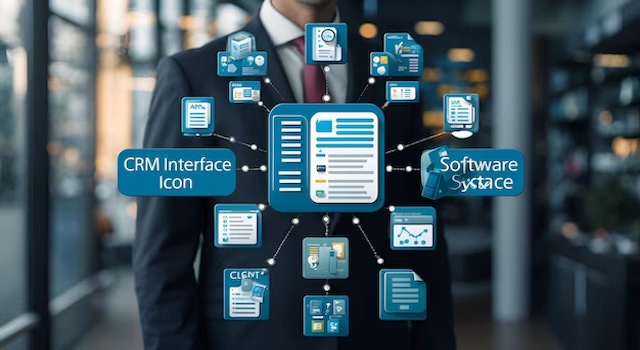CRM for Subscription-Based Business Models: Managing Churn, Upsell, and Lifetime Value
Introduction: Subscription-based business models have surged in popularity across industries—from software-as-a-service (SaaS) to streaming media, subscription boxes, and even automotive services. These models promise predictable recurring revenue, deeper customer relationships, and opportunities for long-term growth. But they also come with unique challenges, particularly around customer retention, upselling, and maximizing lifetime value (LTV). Customer Relationship Management (CRM) systems play a pivotal role in managing these dynamics. In this article, we’ll explore how businesses can optimize CRM for subscription models, focusing on reducing churn, driving upsell opportunities, and increasing LTV.
Why Subscription Models Need Specialized CRM Approaches
Traditional CRM platforms were designed primarily for transactional sales cycles. Subscription models, however, demand continuous engagement, renewal management, and proactive retention strategies. Instead of focusing only on customer acquisition, businesses must nurture customers over months and years, ensuring they derive ongoing value. Without a specialized CRM approach, companies risk higher churn, lost upsell opportunities, and stagnant revenue growth.
The Unique Challenges of Subscription-Based Businesses
Subscription models introduce specific challenges that CRM systems must address:
- Churn Risk: Customers can cancel easily if they stop seeing value, making proactive engagement critical.
- Complex Billing Cycles: Monthly, quarterly, or annual billing schedules must be tracked and managed accurately.
- Upsell Complexity: Cross-selling and upselling require careful timing, personalization, and value demonstration.
- LTV Calculation: Measuring and predicting lifetime value requires ongoing data collection and analysis.
- Customer Fatigue: Over-communication or irrelevant offers can increase cancellation rates.
CRM systems tailored for subscription models must address these issues directly through automation, analytics, and personalized customer journeys.
Key CRM Functions for Subscription Models
To succeed with a subscription-based business model, companies should configure their CRM systems to support several specialized functions:
- Automated Renewal Reminders: CRMs can trigger personalized reminders ahead of subscription renewals, reducing involuntary churn.
- Churn Prediction Models: Using AI and analytics, CRMs can identify at-risk customers based on behavior patterns (e.g., reduced product usage, support complaints).
- Upsell and Cross-Sell Automation: CRMs can recommend premium plans, add-ons, or complementary services at the right stage of the customer journey.
- Usage Tracking: Integrations with product usage data ensure businesses know whether customers are actively engaging.
- LTV Analytics: Dashboards can calculate and forecast lifetime value by customer segment, guiding marketing and retention budgets.
- Customer Support Integration: Linking service interactions into CRM helps identify dissatisfaction early, enabling proactive intervention.
Strategies for Reducing Churn with CRM
One of the most critical success factors in subscription models is churn reduction. CRM can support several strategies:
- Onboarding Journeys: Automated onboarding campaigns help customers quickly see value, reducing early cancellations.
- Health Scoring: CRM assigns a customer health score based on usage, satisfaction, and engagement. Low scores trigger retention workflows.
- Proactive Support: CRM-integrated ticketing alerts teams to recurring issues, so they can proactively reach out.
- Personalized Retention Offers: Customers flagged as at-risk can receive targeted discounts, feature upgrades, or personal outreach.
- Community Engagement: CRMs can track participation in forums, events, or referral programs that deepen loyalty.
Driving Upsell and Cross-Sell Through CRM
Beyond retention, subscription businesses thrive when customers upgrade or purchase additional services. CRM supports upsell strategies by:
- Identifying Usage Gaps: Customers hitting limits (storage, users, bandwidth) can be offered higher-tier plans.
- Behavior-Based Recommendations: Analytics reveal when customers might benefit from complementary products or features.
- Lifecycle Campaigns: Automated nurture sequences introduce new services at key milestones (e.g., after six months of engagement).
- Segmentation: CRMs allow hyper-personalized offers by customer segment, avoiding irrelevant or pushy upsell attempts.
- Sales Enablement: Account managers receive real-time alerts when customers exhibit upsell-ready signals.
Maximizing Customer Lifetime Value (LTV)
Subscription-based businesses live and die by LTV. CRM systems can directly influence LTV by:
- Improving Retention: Longer retention translates directly to higher lifetime value.
- Enhancing Upsell: Higher-tier purchases increase average revenue per user (ARPU).
- Encouraging Referrals: Referral tracking in CRM adds indirect value by bringing in new customers at lower acquisition costs.
- Data-Driven Budgeting: LTV insights help determine how much to invest in acquiring new customers while maintaining profitability.
Industry Examples of CRM in Subscription Models
Subscription businesses across sectors are using CRM to unlock value:
- SaaS: Companies like HubSpot and Salesforce use CRM-integrated analytics to monitor product usage and prompt upgrades.
- Streaming Services: Platforms like Netflix track user behavior in CRM-linked systems to recommend premium features and prevent churn.
- Subscription Boxes: E-commerce brands use CRM to manage preferences, send reminders, and offer upsell options such as limited-edition add-ons.
- Telecommunications: Mobile carriers use CRM to bundle services (TV, internet, streaming) while predicting churn risk.
- Fitness Apps: CRM tracks member engagement and promotes add-ons like coaching or premium training plans.
Benefits of CRM in Subscription-Based Business Models
The right CRM strategy delivers measurable benefits:
- Reduced Churn: Customers stay longer due to proactive retention campaigns and improved onboarding.
- Increased Upsell: Personalized, timely offers maximize revenue potential without alienating customers.
- Improved Forecasting: Recurring revenue becomes more predictable with CRM-driven analytics.
- Customer-Centric Culture: CRM aligns sales, marketing, and support teams around long-term customer health rather than one-time sales.
- Higher Profitability: With better retention and upsell, customer acquisition costs are spread over longer and more profitable relationships.
Challenges of CRM for Subscription Models
While powerful, CRM implementation for subscription businesses comes with challenges:
- Data Overload: Subscriptions generate vast amounts of behavioral data, which must be managed and interpreted effectively.
- Integration Complexity: Billing systems, product usage platforms, and marketing automation must all connect seamlessly.
- Retention vs. Revenue Balance: Overusing discounts to reduce churn can erode margins if not carefully managed.
- Customer Fatigue: Poorly timed upsell attempts risk frustrating subscribers and accelerating churn.
- Scalability: As subscriber bases grow, CRM processes must scale without losing personalization.
Privacy and Compliance Considerations
Because subscription CRM often relies on usage and behavioral data, privacy considerations are critical:
- Clear consent must be obtained before tracking detailed customer activity.
- Data storage and processing must comply with GDPR, CCPA, and other privacy regulations.
- Transparency in data usage (how behavior informs upsell offers) helps maintain trust.
Metrics to Measure Success
To evaluate the success of CRM in subscription models, businesses should track:
- Churn Rate: Percentage of customers canceling subscriptions over a given period.
- Customer Lifetime Value (LTV): The average total revenue per customer across the entire relationship.
- Net Revenue Retention (NRR): Measures revenue growth from existing customers, factoring in upgrades, downgrades, and churn.
- Average Revenue per User (ARPU): A key benchmark for upsell effectiveness.
- Onboarding Completion Rate: Percentage of customers completing onboarding workflows, a leading indicator of long-term success.
Case Example: SaaS Company Reduces Churn with CRM
A mid-sized SaaS provider struggled with high churn rates in its small business segment. By integrating product usage data into its CRM, the company identified that customers who failed to complete onboarding were 3x more likely to cancel within 90 days. The CRM system automated personalized onboarding sequences, flagged low-usage customers, and triggered retention outreach. Within a year, churn dropped by 18%, upsell conversion rates improved by 12%, and overall customer lifetime value increased by 25%.
Future Outlook: The Evolution of CRM in Subscription Businesses
The future of subscription-focused CRM will likely include:
- AI-Driven Churn Prevention: Predictive analytics will become more precise, identifying churn risk earlier and triggering hyper-personalized retention offers.
- Dynamic Pricing Models: CRMs will integrate with flexible billing systems to offer real-time discounts or bundles based on usage behavior.
- Customer Health Dashboards: Standard CRM dashboards will track subscriber health in real time, from engagement to satisfaction scores.
- Embedded Community Platforms: CRMs will integrate with online communities and peer-to-peer support networks to strengthen loyalty.
- Lifecycle Automation: End-to-end customer journeys (from free trials to enterprise-level upgrades) will be automated within CRM.
Implementation Roadmap
Businesses adopting CRM for subscription models should follow a staged approach:
- Audit Current Workflows: Identify gaps in onboarding, renewal management, and upsell processes.
- Integrate Key Systems: Connect CRM with billing, product usage, and support systems.
- Develop Churn Prediction Models: Use data analytics to identify early churn signals.
- Automate Retention and Upsell Campaigns: Build workflows triggered by customer behavior and milestones.
- Measure and Optimize: Track churn, LTV, and upsell metrics to refine CRM processes over time.
Conclusion
CRM is an essential tool for subscription-based business models, enabling companies to proactively manage churn, drive upsell, and maximize lifetime value. By tailoring CRM systems to subscription-specific needs—such as renewal automation, health scoring, and usage tracking—businesses can achieve more predictable revenue growth and stronger customer loyalty. The future of CRM in subscriptions will lean heavily on AI, predictive analytics, and lifecycle automation, making it not just a tool for managing customer data but a critical engine of sustainable growth.







